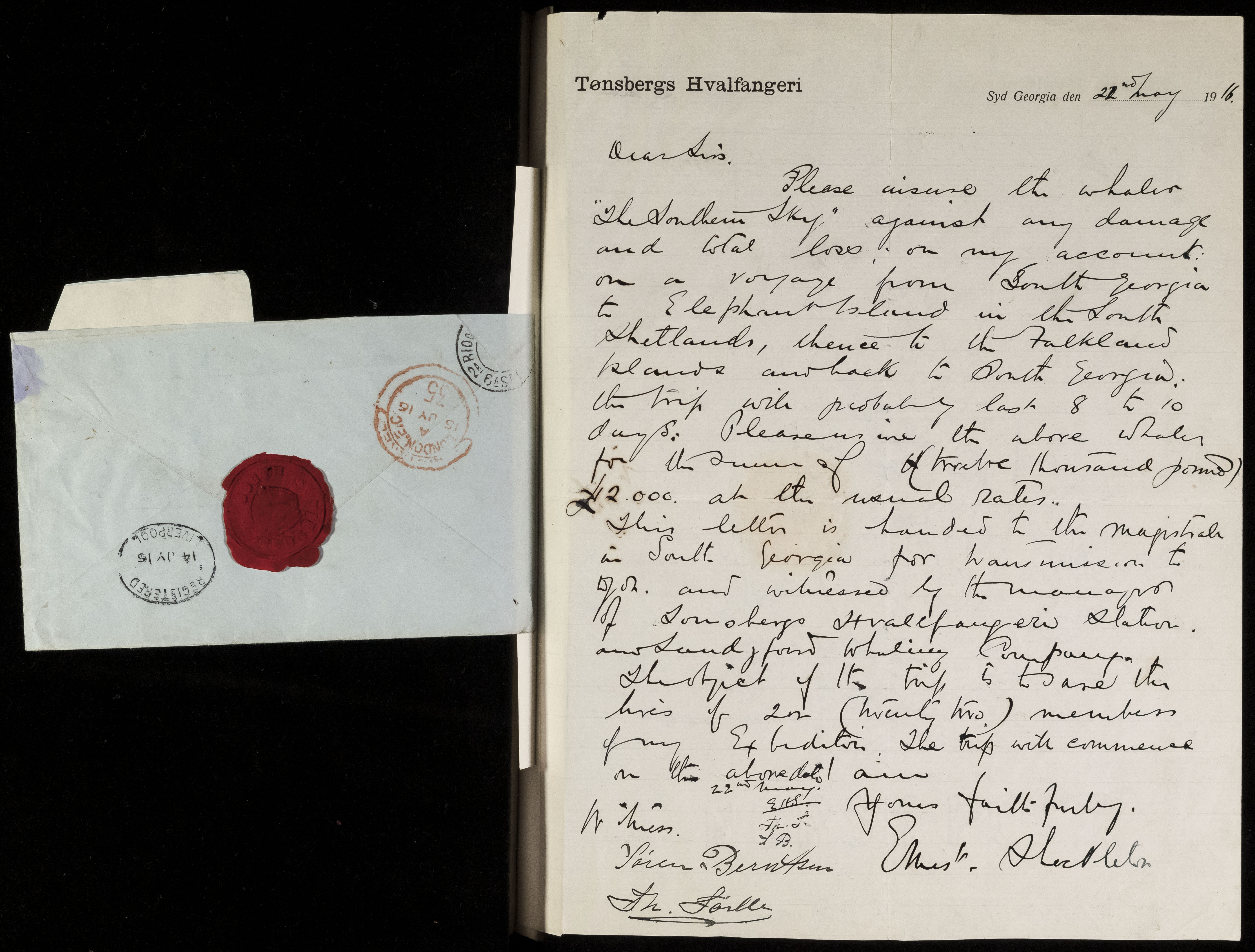During the Heroic Age of Antarctic Exploration, which began at the end of the 19th century and ended after the First World War, the Antarctic region became the focus of intensive scientific and geographical exploration, with 17 major expeditions launched from ten countries.
In August 1914, the Endurance, carrying Ernest Shackleton and 27 crew set out from Buenos Aires on what would be her final journey; with the goal of crossing the Antarctic from the Weddell Sea to the Ross Sea. After encountering polar pack ice, which slowed progress to a crawl, in January 1915 the ship became icebound and after a nine months battle with the ice she was eventually crushed. On 27 October at about 5:00 pm, amid temperatures from −8.5 °F (−22.5 °C) in the morning to −16 °F (−27 °C) in the evening, Shackleton gave the order to abandon ship. The ship's blue ensign was hoisted so that she would, in Shackleton's word's, "go down with colours flying".
All of the crew survived her sinking and were eventually rescued in 1916, after using the ship's boats to travel to Elephant Island, after which Shackleton and five others set out from there to South Georgia to organise a rescue mission. Miraculously the rest of the crew were safely rescued at the fourth attempt, when a rescue party reached them on 30 August 1916, 128 days after Shackleton had left. It’s considered to be one of the great survival stories of human history.
